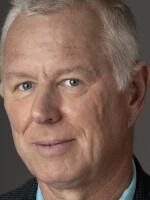
Christopher Joyce
Christopher Joyce is a correspondent on the science desk at NPR. His stories can be heard on all of NPR's news programs, including NPR's Morning Edition, All Things Considered, and Weekend Edition.
Joyce seeks out stories in some of the world's most inaccessible places. He has reported from remote villages in the Amazon and Central American rainforests, Tibetan outposts in the mountains of western China, and the bottom of an abandoned copper mine in Michigan's Upper Peninsula. Over the course of his career, Joyce has written stories about volcanoes, hurricanes, human evolution, tagging giant blue-fin tuna, climate change, wars in Kosovo and Iraq, and the artificial insemination of an African elephant.
For several years, Joyce was an editor and correspondent for NPR's Radio Expeditions, a documentary program on natural history and disappearing cultures produced in collaboration with the National Geographic Society that was heard frequently on Morning Edition.
Joyce came to NPR in 1993 as a part-time editor while finishing a book about tropical rainforests and, as he says, "I just fell in love with radio." For two years, Joyce worked on NPR's national desk and was responsible for NPR's Western coverage. But his interest in science and technology soon launched him into parallel work on NPR's science desk.
In addition, Joyce has written two non-fiction books on scientific topics for the popular market: Witnesses from the Grave: The Stories Bones Tell (with co-author Eric Stover); and Earthly Goods: Medicine-Hunting in the Rainforest.
Before coming to NPR, Joyce worked for ten years as the U.S. correspondent and editor for the British weekly magazine New Scientist.
Joyce's stories on forensic investigations into the massacres in Kosovo and Bosnia were part of NPR's war coverage that won a 1999 Overseas Press Club award. He was part of the Radio Expeditions reporting and editing team that won the 2001 Alfred I. duPont-Columbia University journalism award and the 2001 Sigma Delta Chi award from the Society of Professional Journalists. Joyce won the 2001 American Association for the Advancement of Science excellence in journalism award as well as the 2016 Communication Award from the National Academies of Sciences.
-
The idea behind "clean coal" is technology that would capture for reuse most of the carbon dioxide emitted by coal-burning power plants. Entrepreneurs aim to use similar tech to clean natural gas.
-
Scientists eavesdropping in trees have decoded a high stakes game of hide and seek. Katydids rely on ultrasound to find mates and listen for bats, which use ultrasound to find the bugs, and eat them.
-
The idea of plumes of moisture curling above our heads might seem beautiful, but new research shows atmospheric rivers to be among the most damaging of weather systems.
-
Capuchin monkeys in Brazil have been seen making sharp stone flakes. It was previously thought that only humans and their ancestors had flaking skills.
-
The National Park Service is racing to record soundscapes of each park that capture nature for the ear. "If we start to lose sounds of wilderness, we start to lose a piece of us," one scientist says.
-
Rising sea levels put extra pressure on coastal bedrock in South Florida. Eventually, as seawater moves in, it could contaminate plants on the surface and the region's stores of freshwater beneath.
-
Already, neighborhoods flood more often in Coral Gables, Fla., and water has seeped up from beneath low-lying buildings and yards. Mayor James Cason wants his city prepared for the economic fallout.
-
A nearly complete fossilized skull from Argentina helps explains the success of these giant dinosaurs that roamed some 95 million years ago.
-
Some of the genetic variations in human DNA that have been linked to quick clotting or depression or diabetes lie within or near the genetic stretches we picked up from Neanderthals, a study finds.
-
Microscopes illuminate the tiny. But sound? Scientists didn't really see it as all that important, until an amazing invention came along that opened new worlds: the stethoscope.







